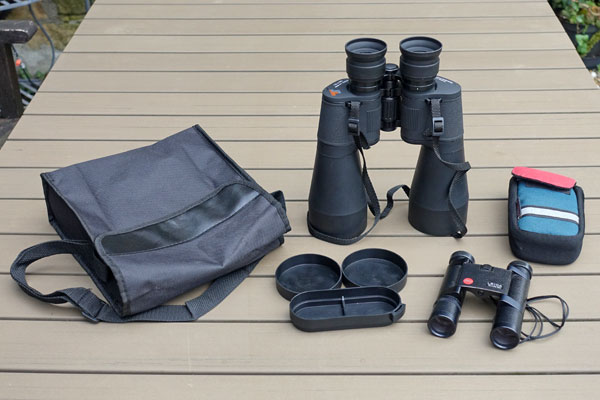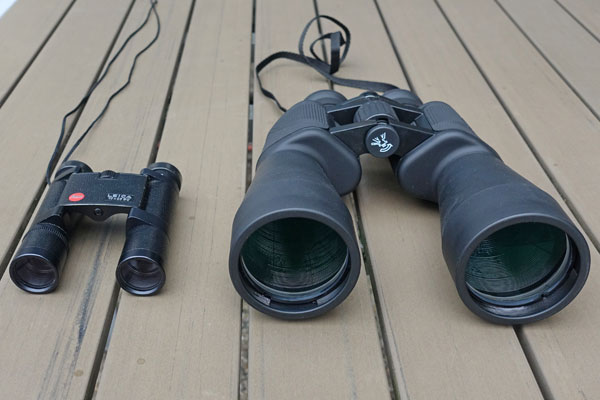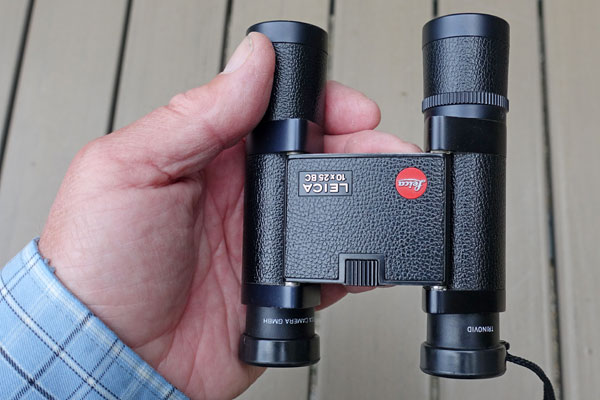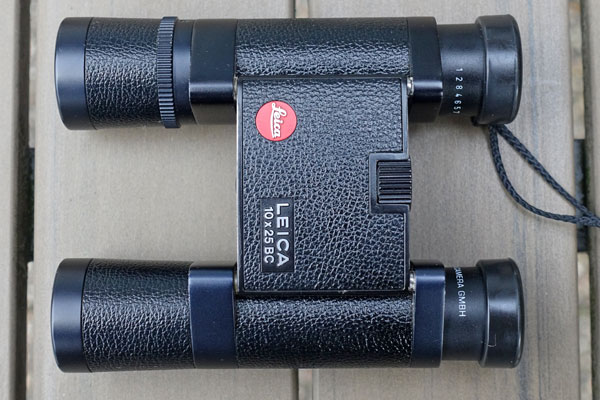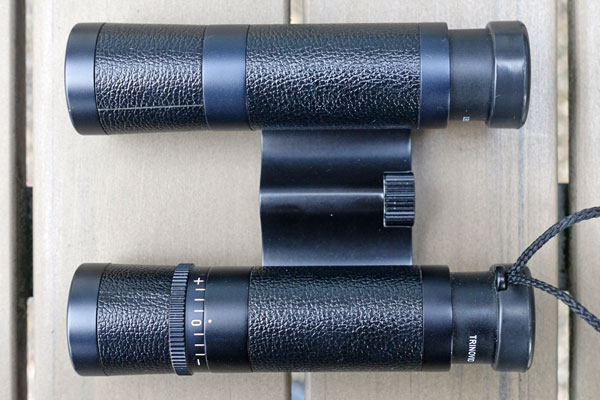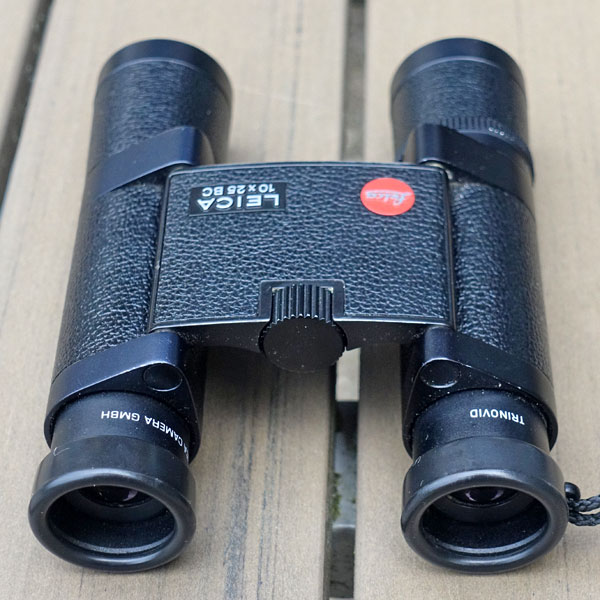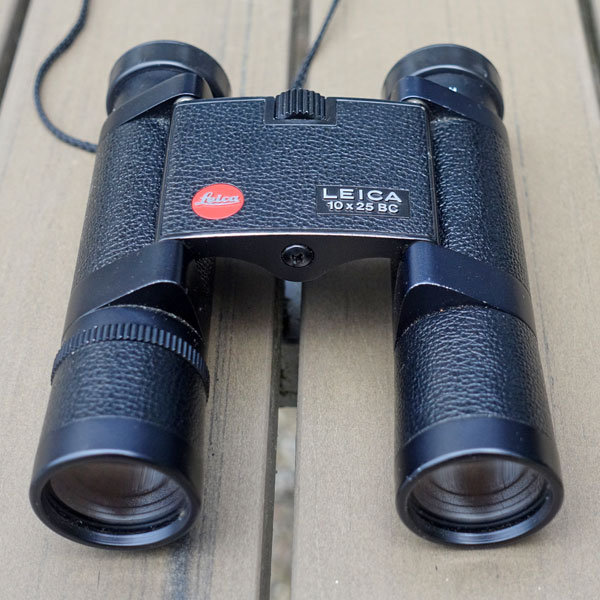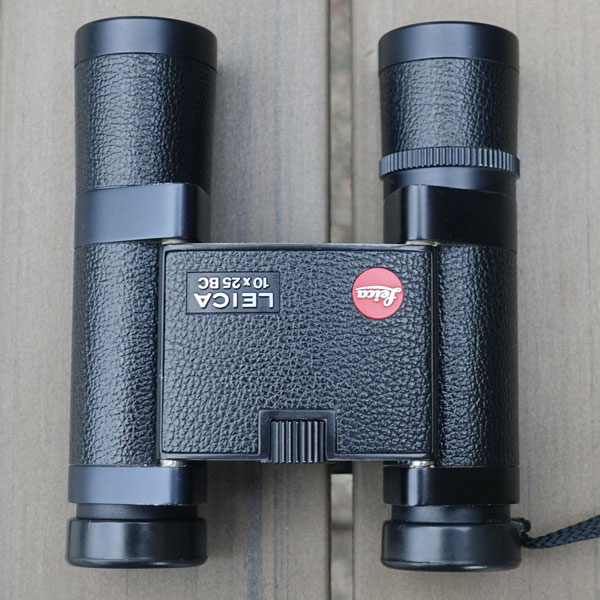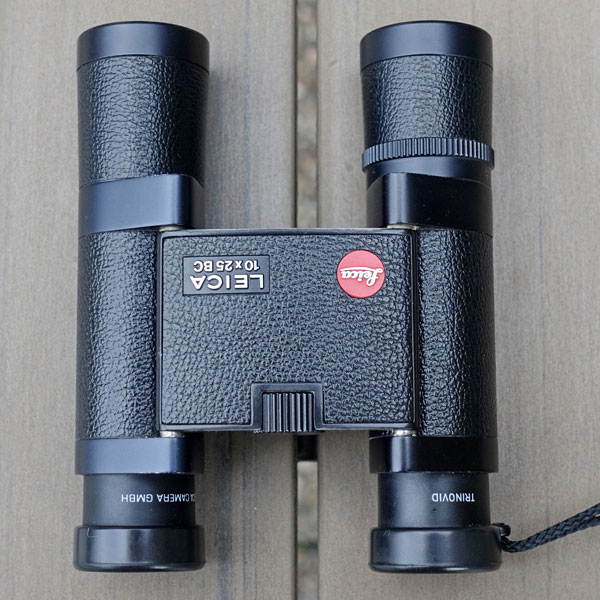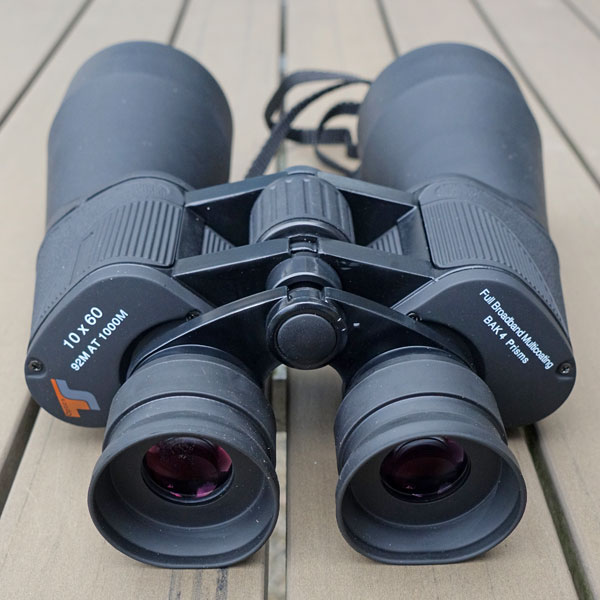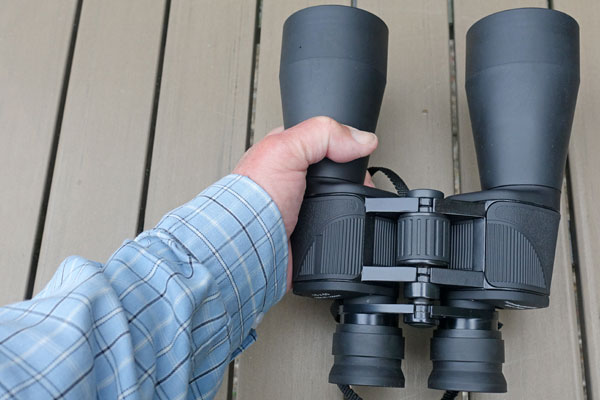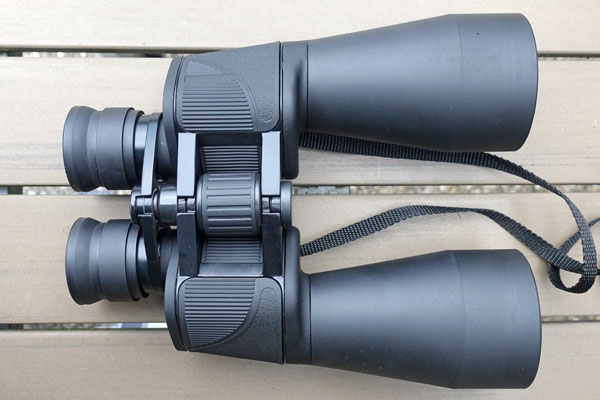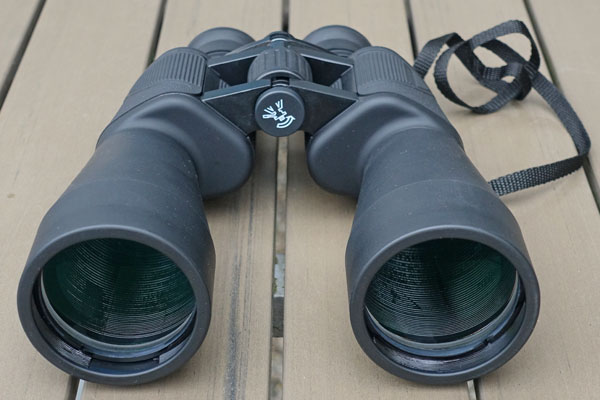My Binoculars
Look | Basic Data | Visited Sky Objects | Conclusions | Links
On this page, I provide some information about my two binoculars, which I also use to observe sky objects. One of them is my fairly old Leica Trinovid 10 x 25 BC, and the latest are the TS 10 x 60 LE Porro binoculars.
Note: I order to avoid redundancy (and work), I list the extended observation data only on the pages for the respective deep sky objects.
Look
A special feature of the Leica Trinovid is that you can push the eyepieces down if you use the binoculars with glasses. With the TS binoculars, you can fold back the rubber eyecups for this purpose.
Technical Data
| Leica Trinovid 10 x 25 BC | TS 10 x 60 LE | |
| Aperture | 25 mm | 60 mm |
| Magnification | 10 x | 10 x |
| Entry Pupil | 25 mm | n.a. (60 mm?) |
| Exit Pupil | 2.5 mm | 6 mm |
| Prism Type | Roof prisms | Porro prisms (BAK-4) |
| Coating | n.a. | Full broadband multicoating |
| Twilight Factor | 15.8 | 24.5 |
| Eye Relief | n.a. | 19.9 mm - retractable rubber eyeguard, fully suitable for spectacle wearers |
| Field of View | 90 m for 1000 m / 5.2° true field of view | 92 m for 1000 m / 5.3° true field of view |
| Focus Range | 5 m to infinity | 6 m to infinity |
| Weight | 245 g (242 g including carrying strap*) | 1200 g (1075 g including carrying strap*) |
| Dimensions | 110 x 60 x 36 mm (L x W x H) | 230 x 190 x 75 mm (L x W x H) |
| Rubber Armoring | no | yes |
| Tripod Adaptation | no | yes, optionally available (adapter) |
*) own measurement
Visited Sky Objects
Note: I order to avoid too much redundancy (and work), I list the extended observation data only on the pages for the respective deep sky objects. In addition, I also list observations with the Omegon 2.1 x 42 wide-field binoculars* here.
|
DSO
|
Name | Constellation | Type | Binoculars |
||
| Leica Trinovid 10 x 25 BC | TS 10 x 60 LE | OM 2.1 x 42* | ||||
| Cr 399 | Coat Hanger | Vulpecula | P | yes | yes | |
| M 3 | Canes Venatici | GC | yes | |||
| M 4 | Scorpius | GC | yes | |||
| M 5 | Serpens Caput | GC | yes | |||
| M 8 | Lagoon Nebula (and NGC 6530) | Andromeda | GN+OC | yes | yes | |
| M 10 | Ophiuchus | KS | yes | |||
| M 11 | Wild Duck Cluster | Scutum | OC | yes | yes | |
| M 12 | Ophiuchus | KS | yes | |||
| M 13 | Hercules Cluster | Hercules | GC | yes | yes | |
| M 14 | Ophiuchus | KS | yes | |||
| M 22 | Sagittarius | GC | yes | |||
| M 31 | Andromeda Galaxy | Andromeda | G | yes | yes | yes |
| M 33 | Triangulum Galaxy | Triangulum | G | yes | --- | |
| M 34 | Perseus | OC | yes | yes | ||
| M 35 | Gemini | OC | yes | yes | ||
| M 36 | Auriga | OC | yes | yes | ||
| M 37 | Auriga | OC | yes | yes | ||
| M 38 | Auriga | OC | yes | yes | ||
| M 39 | Cygnus | OC | yes | yes | ||
| M 41 | Canis Major | OC | yes | yes | ||
| M 42/43 | Orion Nebula | Orion | GNE | yes | yes | |
| M 44 | Praesepe/Crib | Cancer | OC | yes | yes | yes |
| M 45 | Pleiades/Seven Sisters | Taurus | OC | yes | yes | |
| M 48 | Hydra | OC | yes | |||
| M 50 | Monoceros | OC | yes | |||
| M 67 | Cancer | OC | yes | |||
| M 80 | Scorpius | GC | yes | |||
| M 92 | Hercules | GC | yes | yes | ||
| Mel 20 | Alpha Persei (= Mirfak) Cluster | Perseus | OC | yes | yes | yes |
| Mel 25 | Hyades | Taurus | OC | yes | yes | |
| Mel 111 | Coma Berenices Cluster | Coma Berenices | OC | yes | --- | |
| NGC 884/869 | Perseus Double Cluster | Perseus | OC | yes | yes | yes |
| St 2 | Muscle Man | Cassiopeia | OC | yes | yes | |
| Double Stars | ||||||
| Albireo | Cygnus | DS | not separated | |||
| Alcor and Mizar | Ursa Major | DS | Alcor (Little Rider) and Mizar separated, Mizar itself not separated | |||
| Double Double | Lyra | DS | Only two stars seen, not seen as double stars (that is, not as four stars) | |||
G = galaxy, GNE = galactic emission nebula, OC = open star cluster, GC = globular
star cluster, P = star pattern, DS = double star
*) No longer in my possesssion
Conclusions
Leica Trinovid 10 x 25 BC
I bought the Leica Trinovid in the early 1990s, because I wanted compact and powerful binoculars that I would gladly take with me on my trips. It did not disappoint me in this respect. Of course, I also used the binoculars for sky observations, well knowing that it is actually the exact opposite of a night glass, because until recently I had no other binoculars. The moon can be observed quite well with these binoculars, and in 2017, I was even able to see the Andromeda galaxy very nicely at the dark French night sky (in any case, better than ever before...). These binoculars are also well suited to observing larger open star clusters, although a magnification of 10 x is sometimes already too much, whereas for smaller open and globular clusters (and most galaxies) it may be too little.
TS 10 x 60 LE
I bought the TS 10 x 60 LE Porro binoculars in October 2017 (at Teleskop-Spezialisten), because, after the good experiences in September 2017 with a dark night sky in France, I wanted to explore whether a night glass can show even more objects than the Leica binoculars already do. After about a year of experience with these binoculars, I can state that the image has much more contrast than that of the Trinovid and that I can also see more faint stars with it. Regarding the pure recognizability of deep sky objects, however, there does not seem to be a big difference between the two binoculars. I can find most of the sky objects with both of them, but they typically appear more beautiful in TS binoculars. All in all I do not regret the purchase of the TS binoculars, and I am quite happy with them!
Of course, the TS binoculars are much heavier than the Leica Trinovid (though not as heavy as stated in the specifications). Due to the higher weight, I can keep it more steady than the Trinovid, but on the other hand, my arms also get tired much faster ...
Sometimes, I have problems with setting the glass correctly, especially setting the angle, and from time to time also with focusing. But these problems may be related to my eyes. The Trinovid is certainly less problematic for me.
In daylight, the TS binoculars exhibit magenta and cyan color fringes at dark edges (for example, if you view dark branches or a crow against the bright sky), which are more or less disturbing. At night, color fringes are unnoticeable and therefore not disturbing when I observe stars and DSOs. When observing the moon, I find some color fringes (depending on the moon's brightness), but the fringes are not disturbing for me.
Links
- TS Optics 10 x 60 PORRO Wide Angle LE Series Binoculars: www.teleskop-express.de/shop/product_info.php/language/en/info/p1409_TS-Optics-10x60-lichtstarkes-Fernglas-mit-10fach---Daemmerung--Astronomie.html (English)
| 06.08.2024 |
